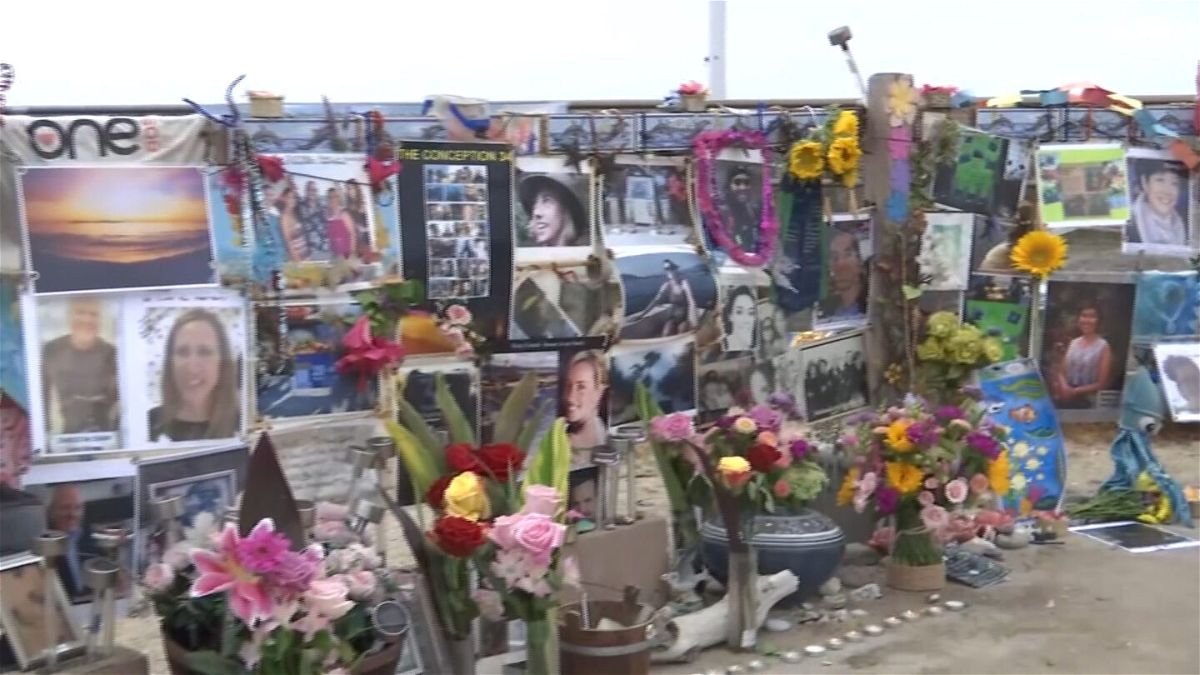Cause of Conception boat fire still undetermined, but NTSB finds deviance from safety requirements

SANTA CRUZ ISLAND, Calif. (KION)
UPDATE 10/20/2020 11:30 a.m. More than a year after a boat fire that killed 34 people near Santa Cruz Island, the National Transportation Safety Board has released its findings and conclusions from the investigation into the fire.
The board said it was not able to determine the origin and cause of the fire onboard the Conception from the wreckage, but instead had to rely on interviews with surviving crew members, an examination of a similar vessel and statements from previous passengers.
Based on those sources, the NTSB believes the fire started in the boat's salon, an area above the bunkroom. Both of the bunkroom's exits opened into the salon, and it is believed that anyone who tried to escape would have been blocked by fire and heavy smoke. Investigators said some of the 34 people in the bunkroom who died were wearing shoes, so they may have been awake and attempting to escape before dying of smoke inhalation.
Investigators were not able to determine the cause of the fire, but it is possible that it could have been started by electrical systems, charging batteries and devices or improperly discarded smoking materials.
Smoke detectors were not required in the salon, and board members said they believe that smoke detectors in all accommodation spaces would have alerted crew members to the fire earlier.
The vessel was required to have a person act as a roving patrol at all times, a requirement that the NTSB said is well known in the industry, but there was no roving patrol, and investigators found that the vessel regularly went without a roving patrol. A person acting patrol would move around the vessel and may have been alerted to the fire before it was in an advanced stage. Investigators said inspection aids do not include verification of a roving patrol, and no citations or fines for failure to post patrol have been issued since 1991.
Investigators also found that crew members were not required to be on board the vessel until 30 minutes before leaving, but on trips that left early in the morning, passengers arrived the night before and spent the night on board without crew members present. There were safety placards, but in-person safety briefings were not done until after that first night. In some cases, they found that crew members who had worked on the boat as long as two years had never been part of a fire drill.
The company that owned the boat, Truth Aquatics, also did not have and was not required to have a Safety Management System (SMS). An SMS defines the responsibilities of all personnel, standardized procedures for normal operations and emergencies, establishes safeguards against risks, includes procedures for reporting accidents and nonconformities and includes procedure for internal audits and management reviews of systems. The board believes that having an SMS could have identified unsafe practices and provided recommendations. The company's loss control program included elements of an SMS, but it did not include normal operating procedures, requirements to develop procedures to prevent future accidents and company audit procedures.
Investigators concluded that there was complacency that led to a normalization of deviance from safety protocols, saying there was a lack of familiarization and training and insufficient record-keeping. Over time, investigators believe the normalization desensitized crew members to non-standard practices and led to degraded performance.
They found that Truth Aquatics overall has been known as a reputable company in the industry, but that they showed a poor safety culture and lack of involvement.
Some of the recommendations offered include requiring interconnected smoke detectors in all accommodation spaces and providing a secondary means of escape to a different space, including on older vessels.
Since the fire, the Coast Guard has issued new emergency safety requirements that include recommending that boaters limit the unsupervised charging of lithium-ion batteries and use of power strips and extension cords.
There is also a criminal investigation being conducted, and the boat's captain may face federal manslaughter charges.
PREVIOUS STORY: The National Transportation Safety Board is scheduled to hold a meeting to discuss the agency's investigation into a deadly fire aboard the Conception dive boat.
The boat was anchored off the Santa Barbara County on Sept. 2, 2019 when it caught fire. All 33 passengers and one of the six crew members died in the fire. Several of those who died were from Santa Cruz County.
During the board meeting, they will vote on findings, probable cause and any recommendations.
The NTSB released the docket with documents that include interview transcripts, photos and other investigative materials last month. See the docket here.
According to the documents, crew members on the boat said they were not instructed on emergency procedures before the incident. All six crew members were asleep when the fire broke out, which violates Coast Guard regulations about a roving watch. The documents also say that the boat's escape hatch was usually discussed during safety briefings, but passengers were not shown where it was.
The boat's captain may face federal manslaughter charges.
